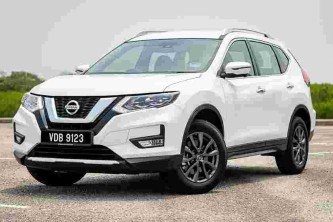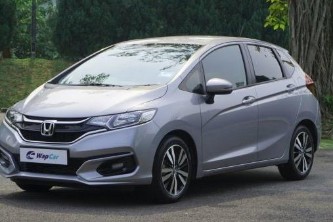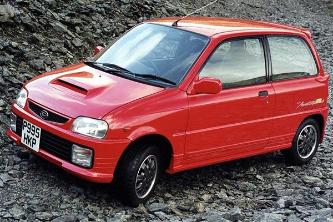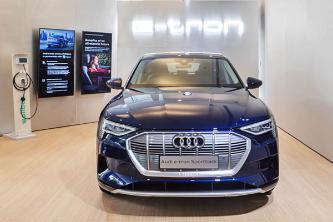supercharger anti lag
supercharger anti lag Related Articles

Think twin-clutch 'boxes are amazing? New Mercedes-AMG C63 will have twin gearboxes
It has a 6kW electric motor sitting on the turbocharger shaft, to basically eliminate turbo lag and improve
Next-gen Mazda 6 might output up to 300 PS, due March 2022?
rear-wheel-drive layout.Mazdas patented inline-6Mazda’s SkyActiv-X engines are equipped with a Roots-type supercharger
Walter Rohrl gets reunited with his former Porsche 924 Carrera GTS rally car
The turbo lag was enormous!
How to properly use Anti-lock Braking System (ABS)
That evasive action wouldnt have been possible if your car wasnt equipped with Anti-lock Braking System
First accessory you should buy for your brand-new car, Trapo Classic Mark II Mats!
s original mounting points.On top of that, Trapo mats are fitted with Trapo Velcro 2.0 for improved anti-slip
What’s so special about Mazda SkyActiv engines anyway?
cycle on the other hand, is an advancement of the Atkinson cycle with the help of forced induction (supercharger
Refreshed 2020 Lexus LC Coupe, lighter and more comfortable
This is achieved through the use of aluminium lower arms, light anti-roll bars, and new material for
The all-new 2020 Nissan Almera’s engine has something lifted from the R35 GT-R!
Mirror Bore Coating, the all-new Nissan Almera also features an electronic wastegate that reduces turbo lag
NA vs Turbo: Why they say there’s no replacement for displacement
Using a larger NA engine maintains its lag-free response and frantic high rpm performance.
Proton Putra WRC - The Malaysian rally prince with lots of potential
This allowed an engine capacity of up to 2.0-litre, the introduction of anti-lag turbo, sequential gearbox
Tested 1.9m km in Malaysia! 2020 Proton X50’s 1.5T & 1.5TGDi engines dependable?
has revealed the measures to counteract it with use of silent high-pressure fuel pump, injector with anti-vibration
Owner Review: A 20-year-old car with all the modern equipment you need - My 2000 Mercedes-Benz W202 C230 Kompressor
This was when Mercedes-Benz reintroduced the supercharger in their engine after a long time.Despite being
Owner Review: A not so reliable Toyota - Story of my Toyota Celica
bearings OEM crankshaft OEM conrods ARP racing studs GReddy mp62 Eaton Mugnason Twin-screw supercharger
Forget flowers, service your mother’s car with Bosch this Mother’s Day instead
Bosch AA recommends the Bosch Aeristo Premium cabin filter, which has anti-virus, anti-bacterial, anti-allergen
Can fuel additives improve fuel economy and increase horsepower?
additives can serve the following purpose: Gasoline stabilizer Corrosion inhibitor Fuel injector cleaners Anti-gelling
Gov: No U-turn on ceiling price of RON 95 petrol, merely change in regulations
Supply Control Regulations of the Supply Control Act 1961.However, the status of Price Control and Anti-Profiteering
Honda Civic 1.5T: the perfect combination of engine and gearbox
turbocharged engine is really excellent.For small capacity turbocharged models, how to refrain from turbo lag
New Proton X50 engine designed to last for 15 years or a distance of 350k km
Traditional turbo lag is minimized with the use of a low inertia turbocharger and the engine would provide
RM 99 for 3 Volvos? Volvo Car Malaysia now offers reusable facemasks
collaboration with Three Little Ahmads and NanoTextile, Volvo Car Malaysia is lauching a collection of anti-microbial
Owner Review: The C-Segment Underdog - Hyundai Elantra
complaints with regards of the 7inch TFT infotainment system except it should be bigger, it doesnt lag
supercharger anti lag Post Review
@Kosherart @CulturedLeftie @RobDrummond @ChrisMasonBBC No, think of it like a car, no ported polished head, no extractors, 4’ exhaust, supercharger/turbo charger, no balanced pistons or blue printed balanced crank, no anti lag ecu, no oversized brakes etc Electric windows, power locks, sat nav, heated seats - now that’s basic. 👍😁🤣
J'aime une vidéo @YouTube : "Anti Lag - Opel Ascona RB25 Engine Swap Turbo & Supercharger, Link ECU tuned by Ahmad Daham, Jordan" à
@Call_Me_Mk_ @DillenMasawi @PhiriTofara Kkkk no hauna kunzi uri wrong. Personal preferences vary ofcause and who wouldn't love the supercharger whine, asi muridzo and some misfire caused by anti lag are magic
@Only9built Great rumble. 👏👏 Nothing beats the whine of a supercharger for me. The original anti lag turbos were a fantastic step forward but sadly the downright ridiculous pop-bang-f4rt systems now being installed make me cringe. 🤢
What sound drives you crazy? — • -Blow off Valve -SuperCharger whine -Turbo Spool -Turbo anti lag misfiring و... http://t.co/trsML1xNUv
@CottonCandyPan turbo noises 🤤🤤🤤 anti lag 🤤🤤🤤🤤 supercharger whine 🤤🤤🤤 that moment when the boost hits 🤤🤤 MANUAL TRANSMISSIONS 🤤🤤🤤😫😫😫😫😫🍆💦💦💦 but you are right, having driven an ev, instant torque is a very big pro. its actually so awesome.
@dahughhefna @autoass Supercharger is good for no lag but if you can use anti lag or twin turbo there is no reason to use a supercharger (the only benefits you get is it’s no lag and is a cheaper option then going for anti lag/twin turbo)
@dahughhefna It really does come down to cost, if you want power but no lag and cheap go supercharger. If you want more power, no lag then go twin turbo or anti lag
Real electric supercharger for anti lag: Interesting reading in the links... 350 amps and 70,000 rpm powered... http://t.co/pQzQq5kY
@GrayBoth @ToyotaGB @ToyotaMotorCorp @TGR_WRC Give me that Anti Lag Turbo sound any day over a whining supercharger
supercharger anti lag Q&A Review
Which engines are distinctive in sound or just deserve true iconic status?
There are soooo many in this category but off the top of my head here are a couple greats. Lexus LFA, 9000 rpm V10. Youtube the wine glass shattering video. BRM V16 race car. The 16000 rpm 1.5L supercharged engine makes a noise the is just incredible. Old Group B rally cars, lots of straight cut gear noise, turbo blow off, 10 foot anti-lag flames, and in the case of the lancias supercharger whine. The audi quattro, lancia delta, lancia delta, lancia 037, lancia ecv, lancia stratos, subaru sti, and many many more. Every watched a tri-turbo diesel drag car/truck? The turbo spooling noise is special in itself but high rpm diesel bass notes are cool too. Ferrari F50. Its high rpm F1 inspired V12 makes a fantastic sound. Mazda 787B. 700+ hp of 9000rpm tri-wankel fury. The noise is intense and very unique. Dodge hellcat, demon, etc. Just the blower noise alone on these is pretty cool.
Would you rather drive a car with a twin-turbo or supercharger? Why?
Supercharger, in a heartbeat. I hate the lag you have in turbo engines, even in variable-, bi-, or scrollturbo engines. A supercharger doesn’t have that, it delivers instant boost, without that annoying turbogap. Sure, you can mount anti-lag systems on turbo engines, but these aren’t keeping your engine alive for long. I also see a lot of people mentioning efficiency in favour of the turbo. But the issue with turbo’s is that efficiency is only increased significantly in diesel engines. Petrol engines don’t benefit nearly as much. In low load situations, a turbo does even decrease efficiency here. It completely depends on the situation, but the efficiency argument isn’t really valid. And even in diesels, turbo’s don’t use ‘otherwise wasted energy’. It still takes engergy from the engine, it just delivers enough boost in order to make the engine deliver more extra power than the turbo just absorbed. And in some cases, this can turn out to be more fuel efficient than a bigger engine without a turbo.
Which one do you prefer, a supercharger or a turbocharger?
I would go for a Turbo Charger. Mainly because when you upgrade your engine to handle alot of pressure, you can squeeze in alot of power using a turbo charger and you can install Anti-lag to prevent turbo lagging that everyone hates. which ofcourse burns more fuel hence reducing fuel consumption.
Do you prefer electric or petrol cars?
I would have to say petrol/gas cars. I know it sounds crazy especially to the modern person but there are some things a gas engine has that you don’t get from an electric motor. The biggest thing would have be is that there is ,no exhaust sound in an electric car,. I would go nuts if I slammed on it and all I heard was my clothes slide across the seats. Continuing with sounds you can’t put a turbo or a supercharger on an electric car. You lose the glory of a turbo flutter and the insane sound of anti-lag. stu-stu-stu Also, gas engines look wayyyyyy cooler. Electric engines might be more economical but they will never be more fun. Anyway, I hope that answered your question. *Picture courtesy of Bing
What is the significant difference between a supercharger and a turbocharger?
Both turbocharger and supercharger serve the same function, increase the power output of an engine without increasing its cylinder size or adding extra cylinders. They both are also forced induction systems i.e., they compress the air flowing into the engine, thus leading to more fuel combustion and an increase in the power output. Coming to the differences. The main difference between the two is how they are powered. In a supercharger, there is a belt that connects directly to the engine. It is powered mechanically by belt- or chain-drive from the engine's crankshaft. Because of this setup, superchargers do not suffer lag. But supercharging puts an added strain on the engine as it uses the engines power to run. Thus the engine needs to be strong to handle the extra boost and bigger explosions. In a turbocharger, the exhaust flow from the engine to spin a turbine, which in turn spins an air pump. This setup does not add any additional strain on the engine as it runs off the wasted energy coming out of the exhaust. However, the biggest problem suffered by all turbochargers is lag. Though aftermarket anti-lag systems can be installed, it would lead to additional costs. Also the turbochargers must idle for about 30 seconds prior to shutdown so the lubricating oil has a chance to cool down, which is not needed in the case of superchargers as it is not lubricated by engine oil. For addition information check out the following links→ How Turbochargers Work How Superchargers Work
What is anti-lag, and why is it necessary in fast cars?
In blown engines - those which are turbocharged as opposed to being mechanically supercharged - there is a tendency for “turbo-lag” to occur on rapid opening of the throttle, the result of which is a discernible hesitation between the command for increased speed, and its actual occurrence. This occurs as a consequence of the time lag between the instant at which the throttle is mashed open and the increase in exhaust gas flow to the inlet of the turbine to which the blower is coupled. You can see the mutually dependent loop here, in that for the turbocharger to rev up, the engine has to rev up. For the engine to rev up, the turbocharger needs to rev up . . . . This manifests itself as turbo-lag . . . a momentary bog while the two machines nurture each other. AT high levels of auto racing vehicles with turbocharged engines are fitted with systems that eliminate turbo lag by way of a fuel nozzle and ignitor setup that functions to blast hot gases into the turbine proportional to the rate at which the throttle is opening in order to supplement the motive forces being imparted to the turbine blades by engine exhaust. I think this might be the same as that to which your question refers as anti-lag.
At low engine RPM, what would work more efficiently, a supercharger or turbocharger?
The answer to this question is quite obvious if one knows how the two work. A turbocharger relies on the engine’s exhaust gases to spin its turbine that in turn, forces compressed air into the cylinders. On the other hand, a Supercharger derives power directly from the crankshaft. At lower engine speeds, the amount of exhaust gases produced is paltry, hence the boost will be negligible. This is what ‘Turbo lag’ is. A Supercharger, therefore, is more efficient at low RPMs. A lot of technological advancements have been made to eliminate the turbo lag. Variable geometry turbochargers, twin-scroll turbochargers are some of the new turbochargers in the market that reduce turbo lag significantly. Volvo’s PowerPulse is the latest anti-lag technology that has surfaced in the market.
How do I make my car (modern) do that gear-shifting exhaust sound?
What sound? Depending on the setup of the car, and the exhaust system the gear shift/closed throttle sound is different. On a turbo setup WITH a blowoff valve makes the “pshhh” sound when the throttle is let off, without a blowoff valve it can make a “ftftftftf”sound, aka “Turbo Flutter”. On a car like mine, a naturally aspirated V8 with an exhaust system that causes crackles and gargles (love it) It can make a deep gargle sound between shifts. It’s also pretty similar on supercharged vehicles as well, but they also make a whine that gets louder as the rpms increase. Or if you have an anti-lag system you get really loud gunshot like pops. Like REALLY loud, personally I don’t like them, but to each their own.
How is zero turbo lag achievable in diesel engines?
Reducing turbo lag has long been a goal and there are many strategies that engine manufacturers have implemented. Getting down to near-zero is difficult but not impossible. Here's a few ideas: Get rid of the turbo., Sorry for pointing out the bleedin' obvious, but one way to get zero turbo lag in a diesel engine is to have zero turbochargers. Not much fun though. I've driven a few non-turbo diesel cars and while there is no lag, there's not much go either. Get rid of the turbo - 2., Drop the turbo part of the ,turbo,supercharger and go for a supercharger instead. As they're mechanically driven from the engine's crankshaft, there is zero lag. Downsides? Although they increase power, it also takes some to drive them which reduces efficiency compared to a turbo. Bang-bang!, Used almost exclusively in motorsport, I've never heard of these systems used on a diesel engine but I've come across some speculative reasoning that suggests it should be possible. Bang bang, or Anti-Lag System (ALS) as it's more properly known, is a system that used misfires to keep the turbo spinning when the engine is off-throttle. First tried in '80s Formula One turbo cars, it became well known as the source of that incredible racket that rally cars used to make, hence the Bang-bang nickname. Along with the noise, it can be incredibly destructive to the lifespan of the turbo and engine. Newer systems are much kinder and there are aftermarket implementations for petrol engines, although they're still horrible for fuel economy. How do these work? Sorry but they're too complex for me to try and explain here, but the ,Antilag system, Wikipedia page should get you started with the basic concept. Google it and there are more detailed explanations complete with videos. Electric motor-driven turbocharger., This is the type of system we are likely to see in high performance petrol and diesel road cars around the end of the decade. Basically, this uses an electric motor to spin up the turbo at low revs which effectively eliminates turbo lag. Then at higher revs when there is plenty of exhaust gas available, the electric motor is bypassed and the turbo runs as usual. Audi and Volvo both have concept engines that utilize sequential twin turbos, with the smaller turbo boosted with the electric motor. Along with killing turbo lag, there are efficiency benefits as well. They can even be turned into a type of hybrid turbocharger, where they use excess boost at high revs to generate electrical power that can be stored and used to eliminate lag at low revs or used elsewhere. This is very similar to the MGU-H part of today's Formula One engines. Fascinating stuff, right?
What is a turbocharger lag, and how does it work?
Turbo lag is basically the time when the turbo building the pressure up. The bigger the turbo the more lag occurs due to the bigger turbine and compressor wheel. The bigger tubo able to move more air into to the engine, but it will need higher revs in order to generate enough pressure in the exhaust to spin the turbine wheel enough to generate the desired pressure on the compressor side. For road use a smaller turbo is more than enough as it reduces the lag, but these turbos are limited to a “lower” peak pressure. For example my car has a bigger turbo it kicks in around 2100rpm, on the other hand Mrs car has a smaller turbo and that kicks in around 1500rpm, her car is 95hp mine is 110hp but her car feels lot quicker because in road use you not really revving a diesel car to 3–4k rpm (diesel both). In motorsports you will see huge turbos because those cars meant to be used at peak revs and peak pressure, but even then these cars are usually programmed with anti-lag systems. This system is meant to eliminate the lag during shifts by injecting more fuel in, and that fuel will ignite in the exhaust and that “explosion” will keep the turbine wheel spining when the exhaust pressure is poor (loud bangs and flame out the exhaust tip). There are few other ways to reduce the lag for example having 2 turbos, so there is a smaller turbo and bigger turbo in the system both of these are connected to the exhaust but on low rpm the small turbo generating the pressure and as soon as there is enough pressure in the exhaust a bypass valve opens and the exhaust gas will start to drive the bigger turbo to eliminate the smaller turbos limitations, in this case you will still experince a little lag, because the smaller turbo still needs time to spool up, this mainly used on diesel engines. Another option is a supercharger and a turbo, on lower rpms the supercharger generates the pressure. The supercharger is connected to the compressor side of the turbo and the turbine side is connected to the exhaust, as soon as the engine reaches the correct rpm a by pass valve will take the supercharger out of the occasio, but not completely because the superchargers boost will not be the same what turbo can generate.
 HOME
HOME 


